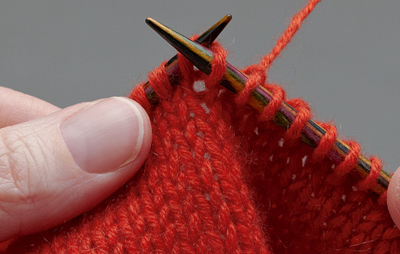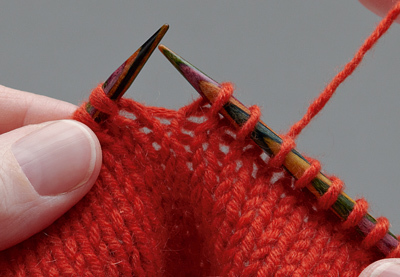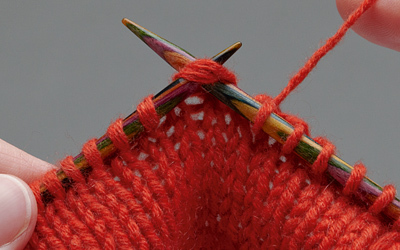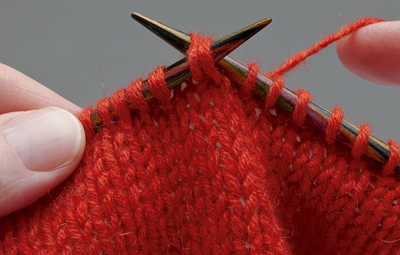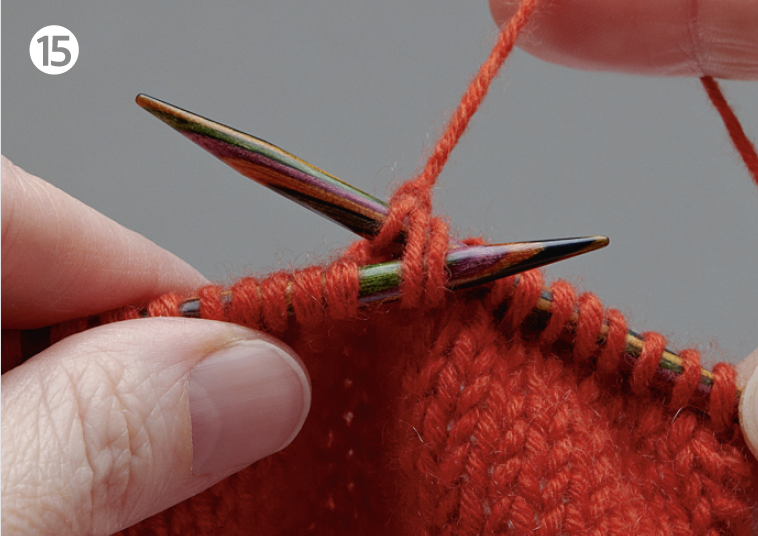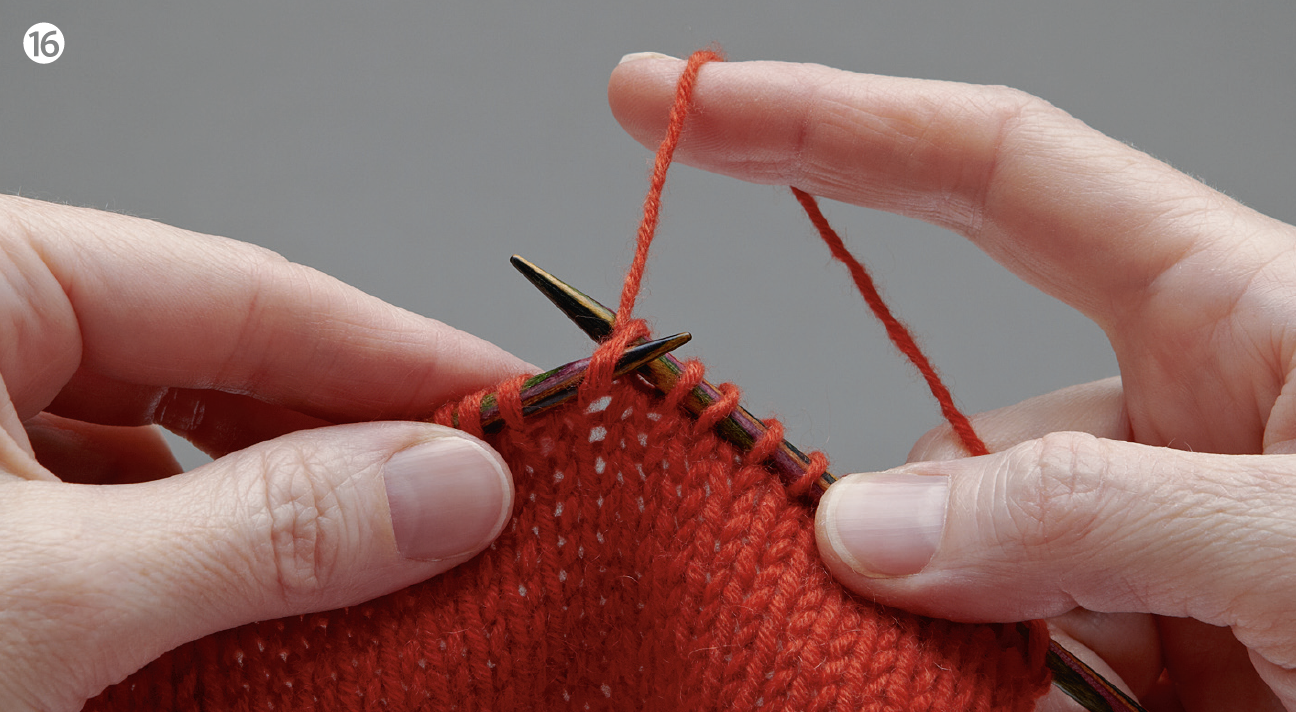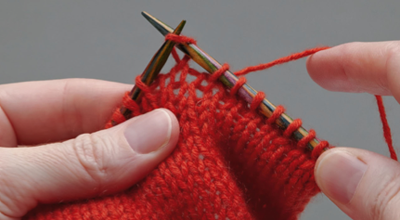Rethinking knitting instructions
By teaching my beginning knitting students how to knit and purl in the same class, they grasp the similarities between these techniques. One stitch informs how the other will be made, and that reinforces the understanding that a purl stitch is simply the inverse of a knit stitch.
I teach both the Western and Combination purl stitches to my beginning students, and have yet to have one too confused to fully comprehend the difference and how they relate to each other. We are generally more intuitive than we imagine.
There are only two main differences to consider when working a traditional knitting pattern in Combination style: decreases and twisted stitches.
Decreases
One of the main benefits of Combination knitting is that the knitter is very aware of how the knit and purl stitches are seated on the needle. For this reason, the concept of left and right slanting decreases seems to be easier to understand and visualise.
Knitting decreases fall into three categories:
- left slanting
- right slanting
- vertical.
With the exception of vertical decreases (which must contain an odd number of stitches), a decrease can contain any number of stitches.
In traditional knitting patterns the term K2tog (knit 2 together) means “knit 2 stitches together so they slant to the right” and SSK (slip, slip, knit) means “rearrange the stitches so they can be knit together to slant to the left.”
For this reason I prefer to use the terms K2tog-R and K2tog-L to describe these two outcomes, and leave it up to the knitter to choose the best technique to accomplish it. I believe using terms that describe the end result democratises knitting and allows everyone to fully participate.
Since Combination knits are seated differently than Western knits, they must be reseated when forming a K2tog-R, as they cannot be knitted through the back of the loop (pictured at the start of this post).

